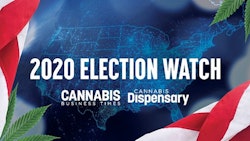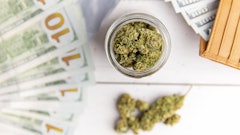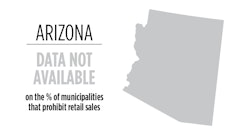
Due in part to the ongoing coronavirus pandemic and its attendant stay-at-home encouragement, delivery has become a hot-button issue in the cannabis industry. Tracking with consumer sales trends in other commercial spaces (food, home goods), cannabis has become a category that many consumers now connect to the idea of delivery.
But it’s not yet a staple of the fragmented cannabis industry in the U.S., where differing state regulations set up an irregular business-to-consumer relationship across state lines.
The following states allow cannabis delivery under a specific regulatory regime, either via a retail license or a specific delivery license: Arizona, Arkansas, California, Colorado, Maine, Maryland, Massachusetts, Michigan, Nevada, New Mexico, New York, Oregon, Rhode Island and Vermont.
Massachusetts, as one example, is just now on the cusp of implementing its new delivery regulations.
“The reason that we’re doing that is because we really, through this license, the entire purpose of the limited delivery license was to try to create a pathway that included lower barriers to entry and by providing for this waiver, we really want to foster those lower barriers and create opportunities as a priority with this license,” Cannabis Control Commissioner Britte McBride said.
Other states, such as Alaska and Washington, have generally allowed a gray-market approach to cannabis delivery services—loose regulatory language that greenlights the delivery of cannabis “gifts.” And in Pennsylvania, for instance, a delivery structure was implemented quickly to accommodate the fallout from the pandemic.
 cannabis delivery
cannabis deliveryEach state is taking a slightly different approach, but, across the board, there’s a clear eagerness to develop a licensing structure around this market demand.
“What's happening in delivery was something that was going to happen anyway,” California-based Ganja Goddess CEO Zachary Pitts said recently. “The pandemic just jumped us ahead a couple of years. This happened in every aspect of our economy. I never used to get groceries delivered, because I was always kind of picky about how I chose my produce and things like that. But now it's something that I've used a number of times. I'm sure there are even people who hadn't used Amazon before and now are using it somewhat regularly. It's the same thing with cannabis.”
In a September 2020 poll of more than 850 adults in California, the Ganja Goddess team reported that 52% of respondents selected “convenience” as the reason why they were turning to cannabis delivery services during the COVID-19 pandemic. Another 32% selected “safety,” and 3% selected “product selection and saving time.”
Those numbers come six months into the pandemic’s reach in the U.S., and yet Pitts’ team points to rising year-over-year sales as indicative of broader trends in the cannabis market. Not only were many cannabis businesses deemed “essential” early on, but those retail touchpoints capitalized on a new and surging customer base. In plenty of cases, such as the states listed above, delivery (and curbside pickup) became a vital tentpole in a cannabis retail business model.
In that same poll, 89% of respondents said that they were “primarily” purchasing cannabis through a delivery service. Just 6% of respondents reported “primarily” purchasing cannabis at a retail shop (again, according to a poll conducted by a delivery service, but the point remains an important bit of context for the marketplace in late 2020).
All in all, 55% of respondents reported increasing their cannabis consumption since March.
“It's something that can be delivered that a lot of people have already enjoyed,” Pitts said. “It has a history tied to delivery during the illicit days [in California]. But it's just become very obvious how easy and convenient and safe it is for people.”
























